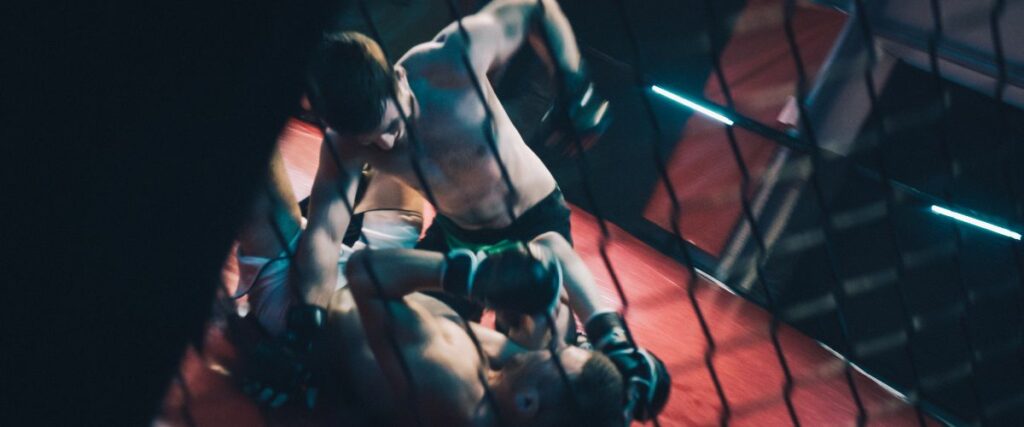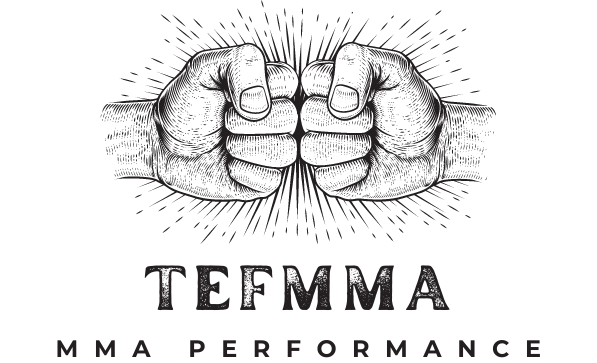If there is one technique that defines MMA, it must be ground and pound. You can find all other techniques and strategies in some other combat sports or martial art, but ground and pound is unique to mixed martial arts. But what exactly is it?
The term “ground and pound” is used in MMA for strikes while on the ground. This happens when a fighter secures a dominant position on top and strikes the fighter underneath him with punches, elbows, or knees.
Ground and pound may seem like the easiest part of MMA to the casual viewer, but this is very far from the truth. We’ll highlight ground and pound and how it differs from position to position.
What Is Ground and Pound?
Ground and pound is the popular term that explains the ground striking found in MMA. The defining technique is truly unique to the sport, which typically combines striking and grappling techniques from many other martial arts.
Ground striking is not found in nearly any other combat sport. This is also the most controversial aspect of MMA, which some people still find very hard to stomach. Despite that, ground and pound is an essential part of the game.
To do ground and pound, you must first acquire a dominant position on top of the opponent. This can be one of several positions, which we will look at in detail in the following paragraphs. “Ground and pound” is punching, striking with elbows, and, in some cases, knees on a grounded opponent.
Striking someone while he is down on the ground may seem like the easiest part of MMA. But doing so effectively is much harder than it looks because the opponent can strike, control, reverse the position, or submit you. Ground-striking follows mostly the same principles as striking on the feet but with a few key differences.
Because you cannot generate force by twisting your hips as you would while standing, leverage, and balance are critical to generating power in ground-and-pound strikes.
Balance is equally important offensively and defensively on the ground when you need to strike with power and hold the position against the opponent actively trying to change it.
Distance management also plays a huge role in the way that you need to create some space to strike meaningfully. Still, this space also opens up opportunities for the fighter on the bottom to strike or attempt a submission.
Ground striking also heavily mixes up grappling. Techniques and positions from BJJ and judo work differently when the opponent can strike, regardless if he is on the bottom or top.
This works both ways. It makes many positions more dangerous for the attacker. But it also opens up new ways to pursue submissions by forcing the opponent into a bad position through strikes.
Where Does the Term Ground and Pound Come From?

While he did not invent ground and pound, Mark Coleman is credited with popularizing and naming this strategy in MMA. Royce Gracie submitted people on the ground without throwing a single strike in the early UFC events.
Still, with the arrival of high-caliber wrestlers like Coleman, who had no problem driving the opponent down but didn’t know what to do once they were there, ground fighting tactics changed.
The new, very liberal ruleset in MMA allowed strikes on the ground. Coleman took advantage of that, using his dominant wrestling to take and keep opponents down while pummeling them into oblivion.
The term itself was created when Coleman said before facing Maurice Smith, “I’m going to ground him and pound the goddamn shit out of him.” The term for the new strategy has stuck to this day.
What Are the Different Types of Ground and Pound?
Ground and Pound From Standing
The most effective and destructive form of ground and pound is from standing, meaning you are on your feet, and the opponent is on his back. This way, you can use the most momentum and deliver the most destructive strikes. The downside is that the fighter on the bottom can throw up kicks with knockout potential.
Ground and pound from standing has the most potential for a one-strike KO, but it is also the most dangerous for the attacker. Just like with forms of ground and pound, there are techniques and methods to bypass defenses and deal the most damage.
Ground and Pound From Full Guard
Ground and pound from full guard is the most common form of ground striking. Most double-leg takedowns leave space between the opponents’ legs. From there, you lack proper hip rotation to deliver a fight-ending blow. Still, it is an excellent position to accumulate strikes and damage.
Fighters with active guards are masters at defending from this position and threatening with submissions and sweeps. The position gives good access to strikes with punches, hammer fists, and elbows, and everything depends on the skill of both fighters.
Ground and Pound from Half Guard
Half guard is not the optimal position to ground and pound, but it’s still viable. Some fighters like Khabib Nurmagomedov use their legs expertly to control their opponent. Especially close to the cage, they can turn the half-guard position into a nightmare for the opponent.
Usually, one hand will have to constantly control the opponent, which leaves only one available to strike. However, you can still accumulate some damage or use those strikes to advance to a better position.
The key to being effective from half guard is to apply constant pressure and throw many strikes at alternating angles. As these are unlikely to be powerful, you must rely on volume. Side control is also an excellent place to land knees to the body.
Ground and Pound from Side Control
When you are in side control, you will most likely have one free arm to strike with, and there is no way of putting too much force behind those strikes. But side control also gives a chance to obtain the most advantageous ground-and-pound position—the dreaded crucifix.
With both his hands pinned, the crucifix is often in a fight-ending position. Only the referee can save the crucified fighter from an endless barrage of punches and elbows.
Ground and Pound from Mount
Mount is a great place to strike, but it’s also very easy to get swept if you’re not careful. The more distance you create to strike, the higher the chance the guy on the bottom will explode and reverse.
The most important thing is to secure your position and obtain a “high mount,” meaning your butt is on the opponent’s chest. Do not get carried away. Throw a few punches, and secure your mount before attempting more strikes, or you will find yourself reversed.
Does Ground and Pound Hurt?
Few techniques deal more damage than ground and pound. Whereas on the feet, you can move away from strikes, tangle the opponent, and strike back with the same power, while on the bottom, everything is much more difficult.
Yes, there are ways to defend and threaten from the bottom, but you are much more susceptible to strikes coming from above. Because the opponent will always have superior leverage, and the advantage of gravity, ground, and pound hurts a lot.
Add to that the feeling of being pinned down, controlled, and hit, and you can understand why being ground and pounded is one of the worst positions to be in in a fight.
Summary
Ground and pound is the term used for striking on the ground. This is done by first securing a dominant position on top and then using punches and elbows on the opponent. It is perhaps the most defining technique in MMA because it doesn’t exist in other combat sports to such an extent.
